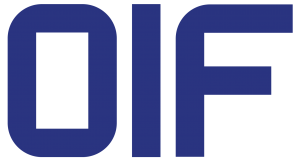Tunable Lasers
HOW CAN TUNABLE LASERS IMPROVE COST & FLEXIBILITY?
Tunable laser technology entered the market 20 years ago and solved two pressing problems: spare equipment inventory and network agility. Before tunability, each laser was capable of operation at only one fixed frequency set during manufacturing. Fixed frequency meant that if hardware failed, an identical hardware replacement was required. There could be 40 or even 80 different wavelengths in use, so network operators and vendors maintained vast stores of replacement hardware and optical modules so the exact replacement would be available if needed.
The need for tunable lasers was both financial and operational. If a network operator needed to change the wavelengths operating in a network, they had to manually swap out the hardware. Adding tunability to the optical hardware was crucial because not only would it reduce the amount of sparing inventory, it would allow network reconfiguration on command without requiring a technician to reconfigure the network by hand. This network flexibility would result in additional cost savings and enable operators to add and modify services for customers rapidly.
The challenge was making this new technology affordable – and that meant higher volumes. One problem was each tunable laser component vendor pursued proprietary specifications and packaging. Sometimes this was because of independent design decisions; sometimes it was because of conflicting vendor guidance. Customers were each asking for different specs, in many cases forcing component vendors to allocate R&D to solve the same problem two different ways.
Equipment designers faced a different problem. Once they selected a tunable laser vendor, a hardware and software redesign was needed to use a different supplier. This reduced the agility of equipment suppliers to implement newer vendors with superior performance or pricing.
STANDARDIZING MECHANICAL PACKAGING AND SOFTWARE INTERFACES
Equipment designers wanted tunable lasers to use same communication protocol, electrical interface, power supply, and mechanical form factor – this would allow them to design once but still have the assurance of multiple suppliers. Component vendors wanted to stop building custom designs and maximize the volume of one product, reducing R&D expenses. However, these vendors also didn’t want to make commodity components and wanted room for innovation and unique product features. If these complementary needs could be met adoption of tunable lasers would accelerate.
The OIF membership worked together to complete two multi-source agreements (MSA). These agreements standardized both the mechanical packaging of the tunable laser component and the software interface for laser control and management. Together, these two MSAs could allow hardware designers to use different laser component vendors in the same hardware design. There was also a basic set of minimum optical performance requirements, but component vendors were free to innovate and exceed these requirements.
MSAs LEAD TO COMPONENT SUPPLIER INVESTMENT & ACCELERATED INNOVATION
Individual component vendors collectively migrated designs to the new MSAs and continued to find ways to improve and innovate their tunable laser specifications. The common mechanical footprint and software interface allowed customers to easily and rapidly change suppliers. More importantly, component suppliers no longer had to build vendor-specific solutions for most applications and could concentrate manufacturing and test investment into a smaller set of product codes. The MSA accelerated adoption and usage but rigid specifications on performance didn’t inhibit innovation.
The cost of tunable lasers dropped, and volume surged – in 2018 over 300,000 tunable lasers built to OIF guidelines were deployed in coherent optics built for WDM applications. Also, tunable lasers have nearly made non-tunable solutions obsolete at 10G speeds, with the cost of tunable solutions now matching that of non-tunable devices.
Authored by: Andrew Schmitt, CignaAI

